Giulia Boato
Deepfake Media Forensics: State of the Art and Challenges Ahead
Aug 01, 2024Abstract:AI-generated synthetic media, also called Deepfakes, have significantly influenced so many domains, from entertainment to cybersecurity. Generative Adversarial Networks (GANs) and Diffusion Models (DMs) are the main frameworks used to create Deepfakes, producing highly realistic yet fabricated content. While these technologies open up new creative possibilities, they also bring substantial ethical and security risks due to their potential misuse. The rise of such advanced media has led to the development of a cognitive bias known as Impostor Bias, where individuals doubt the authenticity of multimedia due to the awareness of AI's capabilities. As a result, Deepfake detection has become a vital area of research, focusing on identifying subtle inconsistencies and artifacts with machine learning techniques, especially Convolutional Neural Networks (CNNs). Research in forensic Deepfake technology encompasses five main areas: detection, attribution and recognition, passive authentication, detection in realistic scenarios, and active authentication. Each area tackles specific challenges, from tracing the origins of synthetic media and examining its inherent characteristics for authenticity. This paper reviews the primary algorithms that address these challenges, examining their advantages, limitations, and future prospects.
GPU-accelerated SIFT-aided source identification of stabilized videos
Jul 29, 2022

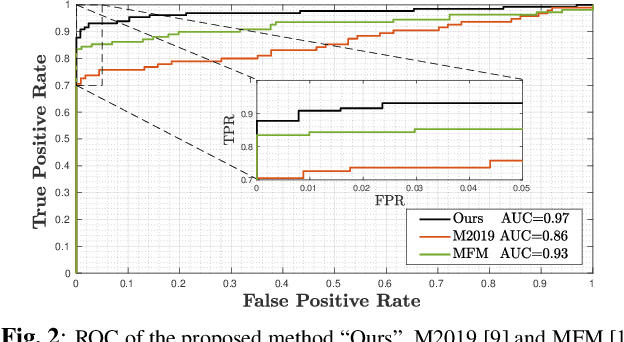

Abstract:Video stabilization is an in-camera processing commonly applied by modern acquisition devices. While significantly improving the visual quality of the resulting videos, it has been shown that such operation typically hinders the forensic analysis of video signals. In fact, the correct identification of the acquisition source usually based on Photo Response non-Uniformity (PRNU) is subject to the estimation of the transformation applied to each frame in the stabilization phase. A number of techniques have been proposed for dealing with this problem, which however typically suffer from a high computational burden due to the grid search in the space of inversion parameters. Our work attempts to alleviate these shortcomings by exploiting the parallelization capabilities of Graphics Processing Units (GPUs), typically used for deep learning applications, in the framework of stabilised frames inversion. Moreover, we propose to exploit SIFT features {to estimate the camera momentum and} %to identify less stabilized temporal segments, thus enabling a more accurate identification analysis, and to efficiently initialize the frame-wise parameter search of consecutive frames. Experiments on a consolidated benchmark dataset confirm the effectiveness of the proposed approach in reducing the required computational time and improving the source identification accuracy. {The code is available at \url{https://github.com/AMontiB/GPU-PRNU-SIFT}}.
More Real than Real: A Study on Human Visual Perception of Synthetic Faces
Jun 14, 2021



Abstract:Deep fakes became extremely popular in the last years, also thanks to their increasing realism. Therefore, there is the need to measures human's ability to distinguish between real and synthetic face images when confronted with cutting-edge creation technologies. We describe the design and results of a perceptual experiment we have conducted, where a wide and diverse group of volunteers has been exposed to synthetic face images produced by state-of-the-art Generative Adversarial Networks (namely, PG-GAN, StyleGAN, StyleGAN2). The experiment outcomes reveal how strongly we should call into question our human ability to discriminate real faces from synthetic ones generated through modern AI.
Dynamic texture analysis for detecting fake faces in video sequences
Jul 30, 2020



Abstract:The creation of manipulated multimedia content involving human characters has reached in the last years unprecedented realism, calling for automated techniques to expose synthetically generated faces in images and videos. This work explores the analysis of spatio-temporal texture dynamics of the video signal, with the goal of characterizing and distinguishing real and fake sequences. We propose to build a binary decision on the joint analysis of multiple temporal segments and, in contrast to previous approaches, to exploit the textural dynamics of both the spatial and temporal dimensions. This is achieved through the use of Local Derivative Patterns on Three Orthogonal Planes (LDP-TOP), a compact feature representation known to be an important asset for the detection of face spoofing attacks. Experimental analyses on state-of-the-art datasets of manipulated videos show the discriminative power of such descriptors in separating real and fake sequences, and also identifying the creation method used. Linear Support Vector Machines (SVMs) are used which, despite the lower complexity, yield comparable performance to previously proposed deep models for fake content detection.
Incremental learning for the detection and classification of GAN-generated images
Oct 06, 2019



Abstract:Current developments in computer vision and deep learning allow to automatically generate hyper-realistic images, hardly distinguishable from real ones. In particular, human face generation achieved a stunning level of realism, opening new opportunities for the creative industry but, at the same time, new scary scenarios where such content can be maliciously misused. Therefore, it is essential to develop innovative methodologies to automatically tell apart real from computer generated multimedia, possibly able to follow the evolution and continuous improvement of data in terms of quality and realism. In the last few years, several deep learning-based solutions have been proposed for this problem, mostly based on Convolutional Neural Networks (CNNs). Although results are good in controlled conditions, it is not clear how such proposals can adapt to real-world scenarios, where learning needs to continuously evolve as new types of generated data appear. In this work, we tackle this problem by proposing an approach based on incremental learning for the detection and classification of GAN-generated images. Experiments on a dataset comprising images generated by several GAN-based architectures show that the proposed method is able to correctly perform discrimination when new GANs are presented to the network
Hue Modification Localization By Pair Matching
Mar 05, 2019



Abstract:Hue modification is the adjustment of hue property on color images. Conducting hue modification on an image is trivial, and it can be abused to falsify opinions of viewers. Since shapes, edges or textural information remains unchanged after hue modification, this type of manipulation is relatively hard to be detected and localized. Since small patches inherit the same Color Filter Array (CFA) configuration and demosaicing, any distortion made by local hue modification can be detected by patch matching within the same image. In this paper, we propose to localize hue modification by means of a Siamese neural network specifically designed for matching two inputs. By crafting the network outputs, we are able to form a heatmap which potentially highlights malicious regions. Our proposed method deals well not only with uncompressed images but also with the presence of JPEG compression, an operation usually hindering the exploitation of CFA and demosaicing artifacts. Experimental evidences corroborate the effectiveness of the proposed method.
Accurate and Scalable Image Clustering Based On Sparse Representation of Camera Fingerprint
Oct 18, 2018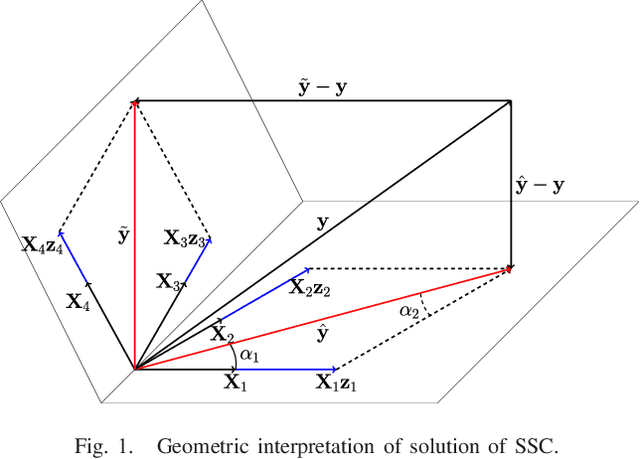
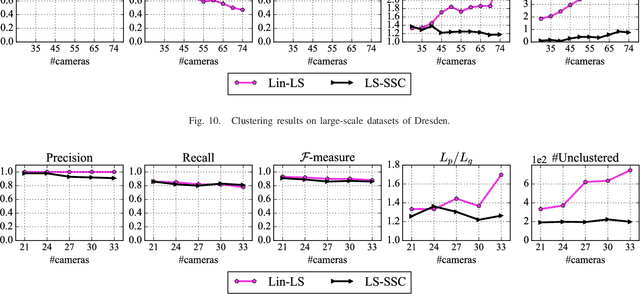
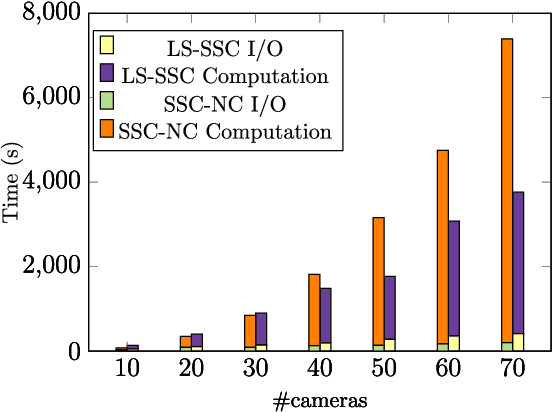
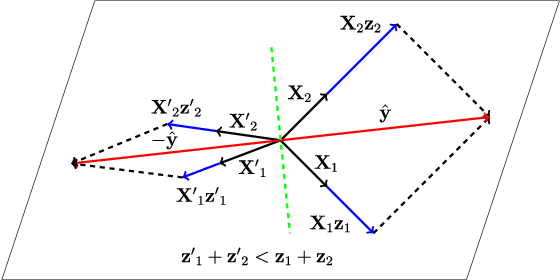
Abstract:Clustering images according to their acquisition devices is a well-known problem in multimedia forensics, which is typically faced by means of camera Sensor Pattern Noise (SPN). Such an issue is challenging since SPN is a noise-like signal, hard to be estimated and easy to be attenuated or destroyed by many factors. Moreover, the high dimensionality of SPN hinders large-scale applications. Existing approaches are typically based on the correlation among SPNs in the pixel domain, which might not be able to capture intrinsic data structure in union of vector subspaces. In this paper, we propose an accurate clustering framework, which exploits linear dependencies among SPNs in their intrinsic vector subspaces. Such dependencies are encoded under sparse representations which are obtained by solving a Lasso problem with non-negativity constraint. The proposed framework is highly accurate in number of clusters estimation and fingerprint association. Moreover, our framework is scalable to the number of images and robust against double JPEG compression as well as the presence of outliers, owning big potential for real-world applications. Experimental results on Dresden and Vision database show that our proposed framework can adapt well to both medium-scale and large-scale contexts, and outperforms state-of-the-art methods.
 Add to Chrome
Add to Chrome Add to Firefox
Add to Firefox Add to Edge
Add to Edge